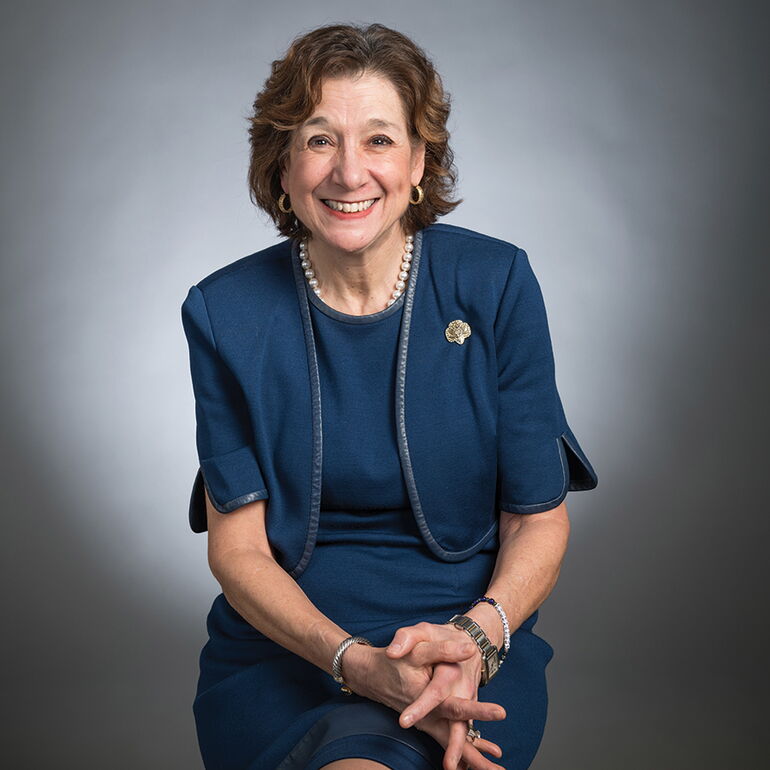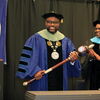Processing Your Payment
Please do not leave this page until complete. This can take a few moments.
-
News
-
Editions
-
- Lists
-
Viewpoints
-
HBJ Events
-
Event Info
- 2024 Economic Outlook Webinar Presented by: NBT Bank
- Best Places to Work in Connecticut 2024
- Top 25 Women In Business Awards 2024
- Connecticut's Family Business Awards 2024
- What's Your Story? A Small Business Giveaway 2024 Presented By: Torrington Savings Bank
- 40 Under Forty Awards 2024
- C-Suite and Lifetime Achievement Awards 2024
- Connecticut's Health Care Heroes Awards 2024
-
-
Business Calendar
-
Custom Content
- News
-
Editions
View Digital Editions
Biweekly Issues
- April 15, 2024
- April 1, 2024
- March 18, 2024
- March 4, 2024
- February 19, 2024
- February 5, 2024
- January 22, 2024
- January 8, 2024
- Dec. 11, 2023
- + More
Special Editions
- Lists
- Viewpoints
-
HBJ Events
Event Info
- View all Events
- 2024 Economic Outlook Webinar Presented by: NBT Bank
- Best Places to Work in Connecticut 2024
- Top 25 Women In Business Awards 2024
- Connecticut's Family Business Awards 2024
- What's Your Story? A Small Business Giveaway 2024 Presented By: Torrington Savings Bank
- 40 Under Forty Awards 2024
- C-Suite and Lifetime Achievement Awards 2024
- Connecticut's Health Care Heroes Awards 2024
Award Honorees
- Business Calendar
- Custom Content
Financial-services trailblazer Mary Barneby forges a second-act career helping girls and young women blaze new trails of their own
 PHOTO | DAVID OTTENSTEIN
Mary Barneby, CEO, Girl Scouts of Connecticut
PHOTO | DAVID OTTENSTEIN
Mary Barneby, CEO, Girl Scouts of Connecticut
Mary Barneby is passionate about empowering girls and women.
You can feel it as she explains why Girl Scouting is as vital these days as it was 107 years ago, when the organization was formed.
“The values and the mission remain the same –– ‘building girls of courage, confidence and character, who make the world a better place,’” says Barneby, who is chief executive officer of the Girl Scouts of Connecticut. “What’s different now is we’re really focused on helping girls to be leaders and be career-ready.
“We’ve evolved programmatically.”
Barneby, 66, oversees programs and services for 2,500 Girl Scout troops statewide –– nearly 27,000 girls and 13,000 adults. Before that she spent a trailblazing career in the financial industry before taking on her current challenge in 2012.
Her many accolades include the Women’s Venture Fund’s Highest Leaf award for commitment to mentoring women, and the National Organization of Italian-American Women’s “Wise Woman” award.
Barneby has served on multiple boards, including the Connecticut Council for Education Reform, the YMCA in Stamford, Interval House in Hartford and the University of New Haven, where she currently is on the Advisory Board for the School of Arts Sciences.
She also was founder and former president of the National Defined Contribution Council and former chair of the American Heart Association’s New York City affiliate.
Barneby displayed an early interest in the advancement of women. In her fourth-grade weekly class debate, she argued why a woman should be President of the United States.
“I chose the topic,” she says.
Barneby also sprang into action when her brother became an altar server, by collecting signatures for a petition allowing girls to fill the same role and rounding up 25 people to join her in delivering the petition to the rectory. (It was to no avail; the Vatican did not approve the practice until 1994.)
Barneby credits her own Girl Scouting experience with laying the groundwork for her accomplishments.
Growing up in Brooklyn, N.Y., in the 1950s, Barneby spent preteen years earning camping, cooking and other merit badges in a Girl Scout troop at her local church.
The process kindled her achievement-oriented and competitive spirit.
“I wanted to have more badges than everybody else,” Barneby recalls with a chuckle. “I don’t know that at the time I saw the Girl Scouts as an empowerment organization.”
At a single-gender parochial high school, Barneby became a leader in student government and editor of the school newspaper.
The turbulent 1960s fueled her commitment to social justice.
While studying psychology and philosophy at New York University, Barneby says, “I realized that living in a world with gender equity was important to me.”
After graduating in 1974, Barneby took a “temporary” job at Merrill Lynch on Wall Street — and ended up staying.
“I was always good at math, and started to work in finance,” she says. “Very few women were doing that.”
Inspired by the Women’s Financial Association of New York [an organization she later served as president], Barneby and several female Merrill Lynch colleagues started a similar program to help one another succeed, and to identify and mentor young women in the industry.
“She took me on as a cause and we became great friends,” recalls Madeline Weinstein, who joined Merrill Lynch in the 1980s and became a senior vice president — and the highest-ranking female in Merrill’s brokerage operations.
“I don’t think she ever said ‘No’ when anyone contacted her for career advice,” adds Weinstein. “Even when we were working mothers, Mary always found a way to do it all.”
Arising, and shining
Barneby advanced rapidly at Merrill Lynch, earning titles ranging from vice president of credit services and vice president and manager of marketing services to vice president and division manager of retirement plans.
Along the way, she earned an MBA in finance from Fordham, and certification in investment management analysis at the Wharton School.
During the early 1980s, Barneby was a pioneer and became a leading industry authority in the development and marketing of 401(k) programs, then in their infancy but soon to become a staple of Americans’ retirement portfolios.
“As people moved to defined-contribution plans, I became very much in demand,” she says. “It was a kind of meteoric rise.
“What I really learned is you could be authentic and be yourself, but you can’t expect people to love you, and you can’t really do the job if you can’t make difficult decisions that impact people’s lives,” she explains.
Between 1988 and 2000, Barneby developed retirement and investment services as president of several companies, including Dreyfus and Delaware Investments.
She subsequently became CEO of Vanteq Inc., a short-lived online financial services start-up that sold second mortgages and investments. The fledgling firm raised more than $13 million before venture capital dollars dried up following the dot.com debacle and especially the September 11, 2001 terrorist attacks.
“It was the first time I really failed at something,” she recounts, “and I learned it wasn’t going to crush me.”
Revisiting her options, Barneby decided to try something different.
Over the subsequent decade, she worked for UBS in several states, helping to create and hone the firm’s wealth-management culture, along the way rising from sales manager and division manager to executive director and branch manager of the Hartford office and head of the Stamford Private Wealth Management office.
The aftermath of the 2008 financial crisis, however, began to put a damper on her enthusiasm.
By the time Barneby turned 60, in 2012, she was contemplating “the best way to spend the last third of my life.”
Throughout her career, Barneby had belonged to women’s groups and mentored women, and those connections led her to a posting for the CEO’s job for the Girl Scouts of Connecticut.
“That night, I told my husband [Kirk Barneby], ‘I think I’ve found the job I want to do.’”
The organization’s board of directors agreed with her assessment.
“It was a pretty easy to decision to hire Mary,” says Patricia Bowen, a former board member and chair of Girl Scouts of Connecticut. “We didn’t think we could attract anybody with her talents.”
Since becoming CEO of Girl Scouts of Connecticut, Barneby has balanced and stabilized the budget, enhanced programing, restructured the organization to be more consumer-oriented and stepped up efforts to reach girls in underserved areas such as Bridgeport, Norwalk, Hartford, Danbury and New Haven, where she and her team recently formed a new troop of about a dozen girls, ages six to 12, based at the YMCA on Howe Street.
“They are smart, remarkable young women and girls,” says Barneby, who is the troop leader. “I marvel at how curious they are, how much energy they have and how excited they are to go out into the world.
“Our goal is to have the troop grow and get some volunteers involved so it will be self-sustaining,” she adds.
Girl Scouts of Connecticut Board President Sheryl Sleeva describes Barneby as a “a thoughtful, strategic and caring leader” who “puts her heart and soul into every aspect of the Girl Scouts organization with full conviction of the critical role that its mission and purpose plays for the girls of our state.”
Barneby frequently travels around Connecticut to interact with Girl Scouts, troop leaders and volunteers.
“Mary is just always there for the organization and the people who look to her as a leader, ” says former Girl Scouts of Connecticut board chair Bowen.
Barneby’s selflessness doesn’t surprise longtime friend and former Merrill Lynch colleague Madeline Weinstein.
“I think she really has found the right place to matter,” Weinstein says, “and is 100-percent committed to helping people in need.”
Barneby still has a hand in the financial world, as an independent director of the board of trustees for First Investors Income Funds, a mutual-fund company.
But her primary focus, as CEO of Girl Scouts of Connecticut, is “helping to shape the next generation of leaders.”
Creating new traditions
Barneby is changing perceptions about Girl Scouts.
Many people may not realize, for example, that selling cookies each spring helps the organization to generate income to support key projects and benefit their host communities.
In 2018, Girl Scouts of Connecticut sold 2.1 million boxes of cookies, generating $2 million in vital revenues.
Even camping is designed to impart real-world lessons.
“Camp CEO,” for example, brings in female business leaders to coach girls about the process and challenges of creating a small business, including marketing and distribution, and to teach them the value of networking.
The Girl Scouts of Connecticut owns and operates seven day camps and one residential camp in the state.
“Every summer, we send about 600 girls to our camps and give away about $400,000 in financial assistance to go to camp,” Barneby says.
With a worldwide membership of 2.6 million, Girl Scouts is the largest leadership organization for girls on the planet.
But membership is declining, and there’s competition from the Boy Scouts of America, which announced in 2017 that girls could now join.
Since then, the Girl Scouts has added new badges to their roster, including environmental stewardship, robotics, cybersecurity, space science and mechanical engineering.
“I feel so strongly about the power of single-gender experience in a safe environment, where girls can try new things, develop skills, take on leadership roles and feel comfortable failing,” Barneby says. “If we don’t give them these opportunities to grow and lead, they may never have the muscle to do it.”
Barneby also explains that Girl Scouts can be every bit as adventurous as Boy Scouts in pursuing rock climbing, ax throwing and other physically demanding activities.
“We always looking for ways to bring more volunteers and experts with these skills to work with troop leaders,” she says. “We’ve had girls walking the Appalachian Trail and doing three-day canoe trips on the Connecticut River.”
As for the future, Barneby says, “If we’re going to survive, we need to meet girls where they are today, and that includes addressing issues girls are grappling with, like body image, bullying and emotional health.”
“We’re living in a world where there’s not a lot of respect for girls from the top,” Barneby adds. “We want girls to be strong, so they’re not compromised.”

2022 Giving Guide
This special edition informs and connects businesses with nonprofit organizations that are aligned with what they care about. Each nonprofit profile provides a crisp snapshot of the organization’s mission, goals, area of service, giving and volunteer opportunities and board leadership.
Learn more
Subscribe
Hartford Business Journal provides the top coverage of news, trends, data, politics and personalities of the area’s business community. Get the news and information you need from the award-winning writers at HBJ. Don’t miss out - subscribe today.
Subscribe
2024 Book of Lists
Delivering Vital Marketplace Content and Context to Senior Decision Makers Throughout Greater Hartford and the State ... All Year Long!
Read Here-
2022 Giving Guide
This special edition informs and connects businesses with nonprofit organizations that are aligned with what they care about. Each nonprofit profile provides a crisp snapshot of the organization’s mission, goals, area of service, giving and volunteer opportunities and board leadership.
-
Subscribe
Hartford Business Journal provides the top coverage of news, trends, data, politics and personalities of the area’s business community. Get the news and information you need from the award-winning writers at HBJ. Don’t miss out - subscribe today.
-
2024 Book of Lists
Delivering Vital Marketplace Content and Context to Senior Decision Makers Throughout Greater Hartford and the State ... All Year Long!
ABOUT
ADVERTISE
NEW ENGLAND BUSINESS MEDIA SITES
No articles left
Get access now
In order to use this feature, we need some information from you. You can also login or register for a free account.
By clicking submit you are agreeing to our cookie usage and Privacy Policy
Already have an account? Login
Already have an account? Login
Want to create an account? Register
Get access now
In order to use this feature, we need some information from you. You can also login or register for a free account.
By clicking submit you are agreeing to our cookie usage and Privacy Policy
Already have an account? Login
Already have an account? Login
Want to create an account? Register






0 Comments